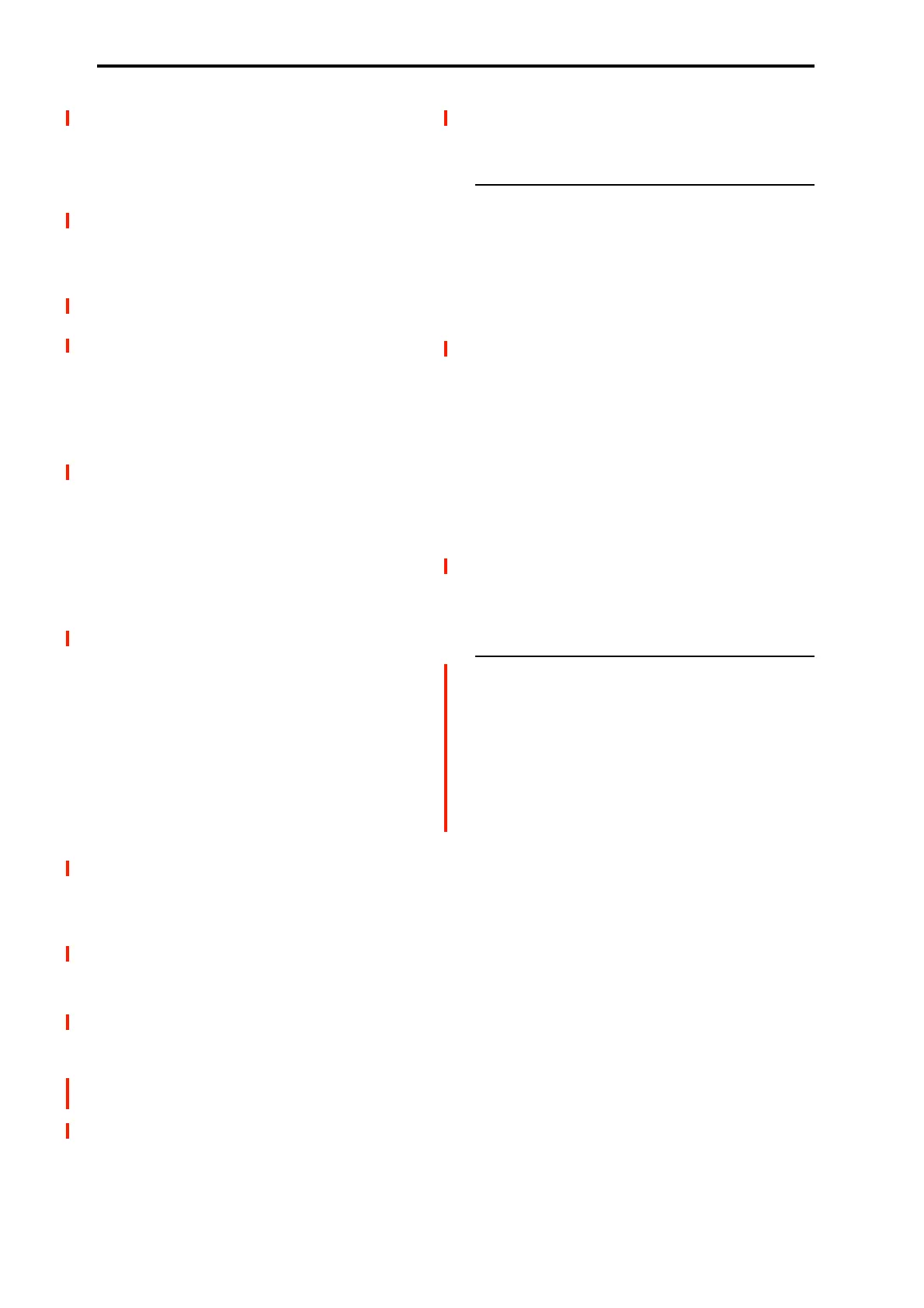EXi: AL-1 Analog Synthesizer
156
Frequency [00…99]
This controls the cutoff frequency of Filter A, in increments
of 1/10 of an octave. The specific effect of the cutoff
frequency will change depending on the selected Filter
Type, as described above.
Frequency Fine [-99…+99]
This provides fine control of the filter cutoff frequency. Each
step of this parameter is equal to 1/100 of a step of the main
Frequency parameter, above.
Resonance Type [Standard, High]
This controls the strength of the filter resonance when the
Filter Routing is set to 24dB (4-Pole). When the routing is
set to Single, Serial, or Parallel, this parameter is grayed
out.
Standard provides the resonance character of a typical
analog 4-pole filter.
High creates a more pronounced resonance.
Resonance Bass [Tight, Full]
This controls the character of the filter resonance at low
cutoff frequencies. Its effect is most noticeable with high
Resonance settings.
Tight produces a more restrained resonance, similar to a
classic, American, wood-paneled monophonic synthesizer.
Full produces a wide, boomy resonance, reminiscent of a
famous five-voice American synthesizer.
Resonance [00…99]
Resonance emphasizes the frequencies around the cutoff
frequency.
When this is set to 0, there is no emphasis, and frequencies
beyond the cutoff will simply diminish smoothly.
At medium settings, the resonance will alter the timbre of the
filter, making it sound more nasal, or more extreme.
At very high settings, the resonance can be heard as a
separate, whistling pitch.
To make the resonance track the keyboard pitch, see “Key
Follow,” on page 159.
Resonance Mod by AMS [List of AMS Sources]
This selects a modulation source to control the Resonance
amount. For a list of AMS sources, see “Alternate
Modulation Source (AMS) List” on page 901.
Intensity [–99…+99]
This controls the depth and direction of the Resonance
modulation.
Pan [Random, L001…C064…R127]
This controls the stereo pan for Filter A’s output. It is
available only when Filter Routing is set to Parallel.
When the Filter Routing is set to Single, Serial, or 24dB
(4-Pole), the Pan parameters will be grayed out.
AMS [List of AMS Sources]
This selects an AMS source to modulate Pan. For a list of
AMS sources, see “Alternate Modulation Source (AMS)
List” on page 901.
Intensity [–99…+99]
This controls the depth and direction of the Pan AMS
modulation.
5–1c: Filter B
Filter B is available when the Filter Routing is set to Serial
or Parallel. Otherwise, its parameters will be grayed out.
Filter B is almost the same as Filter A, but without the Multi
Filter mode, and with the addition of the Link controls, as
described below. For all other parameters, please see the
descriptions under “5–1b: Filter A,” on page 155.
Link [Off, On]
When Link is On, most of Filter B’s parameters are grayed
out, and are instead controlled by the settings for Filter A.
Specifically, Filter B will use Filter A’s settings for
Resonance, Resonance Bass, and all Frequency and
Resonance modulation settings. Filter B’s Frequency is also
linked to that of Filter A, with an optional frequency offset
via the Link Frequency Offset parameter, below.
The Bypass, Type, Input Trim, Output Level, Output
Level AMS, Pan, and Pan AMS parameters are still
controlled separately.
Link Frequency Offset [–99…+99]
This offsets Filter B’s Frequency from that of Filter A, and
applies only when Link is On.
When Link is Off, this parameter is grayed out.
v
5–1: Page Menu Commands
• Compare →p.112
• Write Program →p.112
• Exclusive Solo →p.113
• PAGE →p.126
•MODE →p.126
